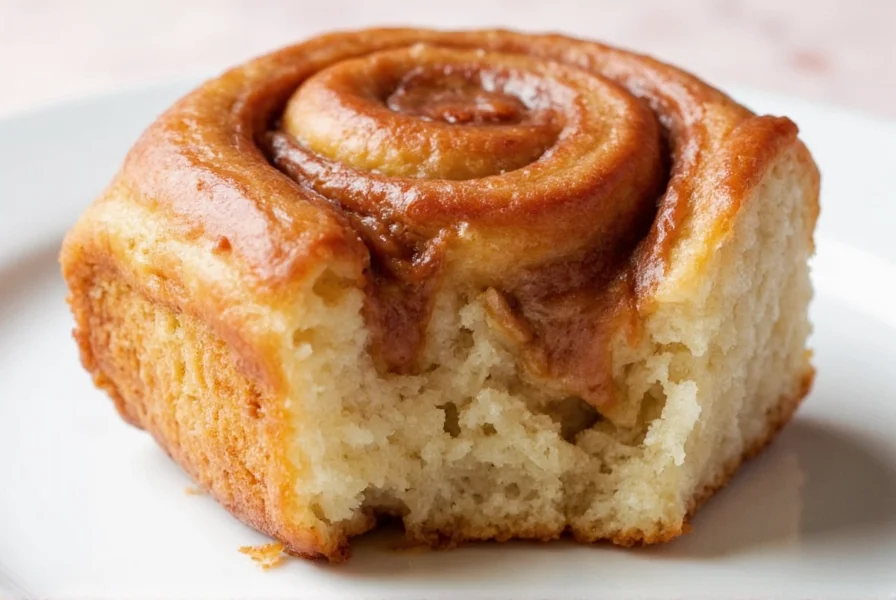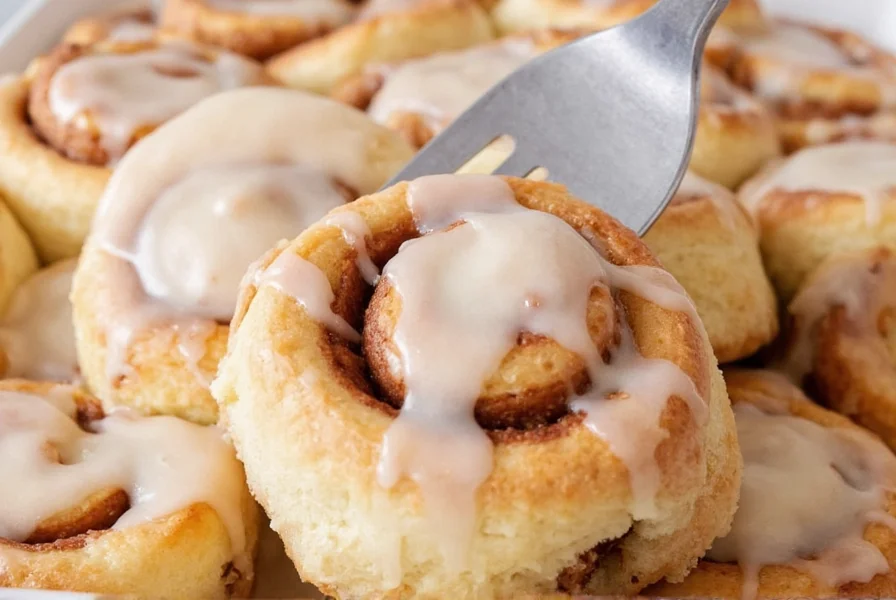The secret to achieving perfectly ooey gooey cinnamon rolls lies in precise ingredient ratios, controlled baking time, and proper cooling technique. True ooey gooey texture requires slightly underbaking the rolls (removing them at 190-200°F internal temperature), using a higher fat content dough, and incorporating a brown sugar-corn syrup filling that creates the signature sticky, molten center. The ideal cinnamon roll should have a tender exterior with a center that pulls apart in soft, moist strands when bitten.
Every baker dreams of pulling golden-brown cinnamon rolls from the oven with that irresistible, molten center that oozes with every pull. Achieving that perfect ooey gooey texture isn't magic—it's science combined with precise technique. While many recipes promise this coveted quality, most fall short due to common mistakes in ingredient selection, baking time, and cooling methods.
The Science Behind Perfectly Gooey Cinnamon Rolls
Understanding the chemistry behind that ideal texture transforms your baking results. The "ooey gooey" quality comes from three critical factors working in harmony: moisture retention, sugar composition, and protein structure.
When properly executed, the corn syrup in the filling prevents sugar crystallization while creating a viscous, sticky texture. Brown sugar's molasses content adds hygroscopic properties that attract and retain moisture. Meanwhile, the dough's gluten development must be controlled—overworked dough creates too much structure, resulting in rolls that are firm rather than tender and gooey.
| Texture Component | Role in Achieving Gooeyness | Optimal Measurement |
|---|---|---|
| Moisture Content | Prevents drying during baking | 72-75% hydration in dough |
| Brown Sugar Ratio | Retains moisture with molasses | 2:1 brown to white sugar ratio |
| Corn Syrup | Creates viscous, non-crystallizing filling | 2-3 tablespoons per batch |
| Baking Temperature | Controls moisture evaporation | 325°F (163°C) for 22-25 minutes |
Essential Ingredients for Authentic Gooey Texture
Not all ingredients perform equally when crafting the perfect ooey gooey cinnamon roll. The difference between adequate and exceptional lies in specific ingredient choices:
- Bread flour vs. all-purpose: Bread flour's higher protein content (12-13%) creates better structure while maintaining tenderness when properly handled
- Dark brown sugar: Contains more molasses (6.5% vs. 3.5% in light brown) for superior moisture retention
- Unsalted butter: Provides fat content without interfering with salt balance in the recipe
- Corn syrup: The secret weapon that prevents sugar crystallization in the filling
Professional bakers consistently report that replacing even 25% of the white sugar with corn syrup in the filling transforms ordinary cinnamon rolls into the coveted ooey gooey variety. This simple substitution creates a filling that remains viscous rather than setting firm as it cools.

Step-by-Step Technique for Guaranteed Gooey Results
Following these precise steps ensures your cinnamon rolls achieve that restaurant-quality ooey gooey texture every time:
- Dough preparation: Mix until just combined—overmixing develops too much gluten, leading to tough rolls
- First rise: Allow to double in size at 75-80°F (24-27°C) for 60-90 minutes
- Filling application: Spread softened butter first, then sprinkle filling mixture evenly
- Rolling technique: Roll tightly but gently to maintain even layers without compressing the dough
- Second rise: Allow rolls to nearly double (45-60 minutes) before baking
- Baking precision: Remove at 190-200°F internal temperature (5-7 minutes before traditional recipes suggest)
- Cooling method: Let rest 10 minutes before icing to allow partial setting while maintaining gooey center
Common Mistakes That Ruin Your Gooey Texture
Even experienced bakers make these critical errors that prevent achieving that perfect ooey gooey cinnamon roll texture:
- Overbaking by just 3-5 minutes: The difference between gooey and dry occurs in a narrow temperature window
- Using only white sugar in filling: Creates a crystallized, hard filling rather than viscous gooey center
- Incorrect pan size: Too-large pan causes rolls to spread rather than rise upward, affecting texture
- Immediate icing application: Melts the icing into the rolls rather than creating a proper topping layer
- Overworking the dough: Develops excessive gluten, resulting in chewy rather than tender rolls
Troubleshooting Your Cinnamon Roll Texture
When your cinnamon rolls don't achieve that desired ooey gooey quality, these solutions address specific problems:
Problem: Rolls are too dry
Solution: Increase dough hydration by 2-3%, add 1 extra tablespoon of milk to the dough, and reduce baking time by 3-5 minutes.
Problem: Center is raw but exterior is done
Solution: Lower oven temperature to 300°F (149°C) and extend baking time by 5-7 minutes for more even cooking.
Problem: Filling doesn't stay gooey after cooling
Solution: Replace 25% of white sugar in filling with corn syrup and ensure rolls are removed from oven at 195°F internal temperature.

Proper Storage and Reheating Techniques
Maintaining that perfect ooey gooey texture after baking requires specific storage methods. Never refrigerate cinnamon rolls—this accelerates staling. Instead:
- Store at room temperature in an airtight container for up to 48 hours
- Place a paper towel between layers to absorb excess moisture
- Reheat individual rolls for 15-20 seconds in microwave with a cup of water
- For best results, refresh in a 300°F oven for 5 minutes before serving
Freezing is actually preferable to refrigeration for longer storage. Wrap cooled rolls individually in plastic wrap, then place in freezer bags. Thaw at room temperature for 2 hours, then reheat as directed. Properly frozen cinnamon rolls often maintain better texture than those stored at room temperature beyond two days.










 浙公网安备
33010002000092号
浙公网安备
33010002000092号 浙B2-20120091-4
浙B2-20120091-4